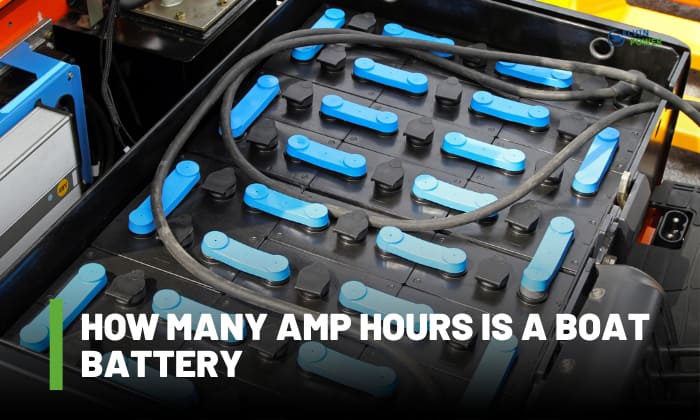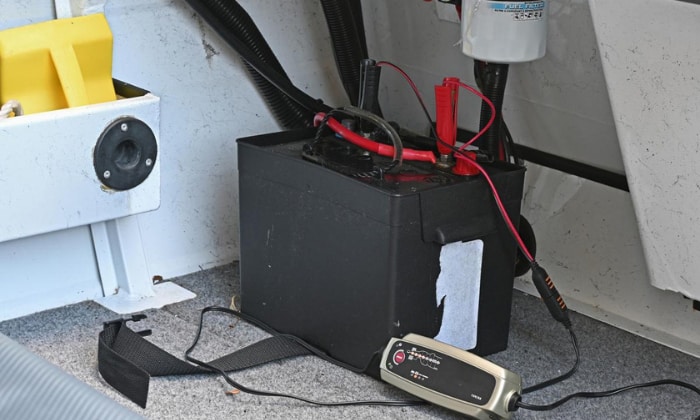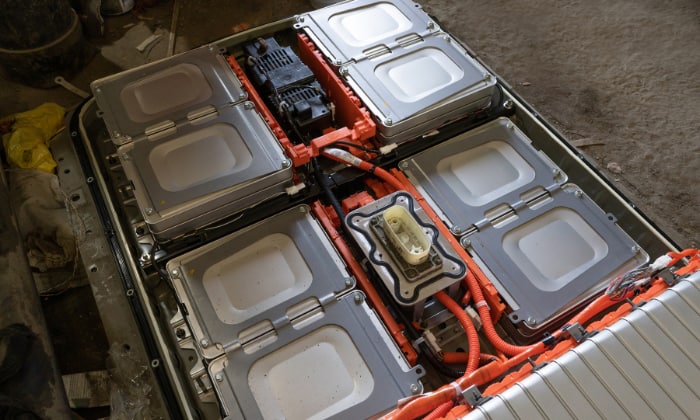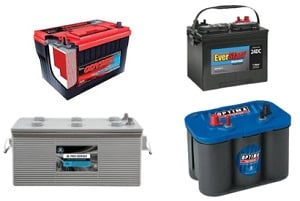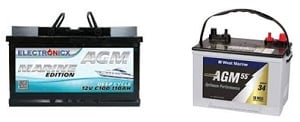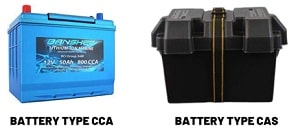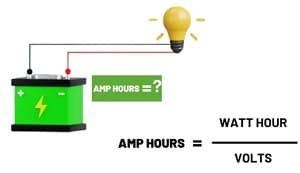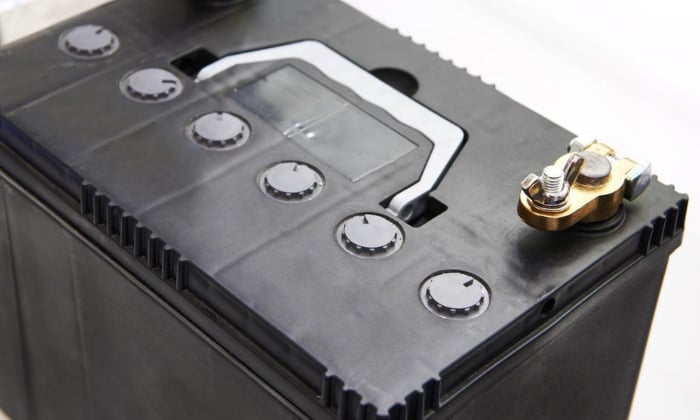Finding out how many amp hours is a boat battery can help you determine which unit to buy and use for your vessel. But what can you do to figure out the battery’s amp-hour rating?
A boat battery often has a 70 to 85 amp hour capacity. Divide the watt-hours by the battery’s voltage to find its amp-hour reading. Alternatively, look for the detail on the product’s user manual or on a sticker on the model’s surface.
You should continue reading to learn the ways to determine a boat battery’s amp-hour capacity. Doing so can help you use the product optimally and safely.
Table of Contents
Amp Hour Capacity of a Boat Battery
Also called the reference rating, a boat battery’s amp-hour capacity tells users about the unit’s performance. Specifically, it reveals how much current the battery can supply in one hour.
Factors Influencing Amp Hour Ratings
Different factors can affect a boat battery’s amp-hour ratings. These elements include the following:
Group Size
Generally, the battery bank size can determine the unit’s supplied power and its capacity. Among the different boat battery sizes, those in Group 24 are typically the ideal choice for small to medium boats, while group 27 and 31 suit bigger vessels.
The ‘bigger’ the group size, the heavier the battery will be.
Also, here’s an amp hours chart that shows the typical ratings for different marine power units:
| Group Size | Amp-Hours |
| U1 | 31 -34 Ah |
| 22 NF | 50 – 55 Ah |
| 24 | 75 – 80 Ah |
| 27 | 90 – 100 Ah |
| 30 | 100 -150 Ah |
| 31 | 100 – 125 Ah |
| 4D | 180 -200 Ah |
| 8D | 225 – 250 Ah |
| L16 | 400 Ah |
Battery Technology
Absorbent glass mat (AGM) batteries are models using fiber separators between their positive and negative terminals. Also called advanced-lead acid batteries, this technology helps absorb battery acid to reduce, if not eliminate, maintenance.
Flooded lead-acid power storage units also exist for boats. But these options typically only have 50% of their capacity as their depth of discharge as compared to lithium-ion models, which can go up to 90%.
Comparing flooded lead-acid to AGM types also reveal that AGM models are slightly superior, considering their 60 to 80% DOD.
So, assuming two boat batteries have the same 100-amp-hour capacity. However, one is an AGM model, while the other uses lithium-ion technology. The latter can deliver 90 marine battery amps hours, while the former may only supply up to 60 amp hours.
Battery Type
Boat batteries can also fall under three types: starting, deep cycle, and hybrid.
A starting battery for marine vessels typically supplies the initial burst of power required to ignite the engine. Additionally, starting boat batteries generally have CCAs and CAs that are worth considering instead of Ah ratings.
In contrast, a deep cycle battery often provides a steady power supply after the boat’s engine starts. Deep cycle boat batteries help run electronics like GPS and marine radios, and their Ah is important.
Finally, a hybrid or dual-purpose battery can be ideal for small boats. This type can act as a starting and deep cycle model, though it is less effective at both tasks compared to its counterparts. Hybrid designs have Ah ratings as well.
Calculating Amp Hours For A Boat Battery
Calculate the AH rating of a boat battery by dividing its watt-hours by its voltage. The formula to use would look like the following:
\[ \text{Boat battery Amp Hours} = \frac{\text{Battery Watt Hours}}{\text{Battery Voltage}} \]
For example, a 1,200-watt-hour 12-volt battery will have a 100-amp-hour rating. Note that you can use the same formula to calculate the milliamp hours of smaller batteries. But you must multiply the watt-hours by 1,000, then divide its result by the voltage.
Note that the Wh rating is determinable by adding the wattage of all boat electronics you plan to run, then multiplying the result by the devices’ operation time.
Frequently Asked Questions
How To Convert MCA to Ah?
Converting MCA to AH will require you to find the CCA rating first. If you have the cold cranking amps, multiply it by 1.3 to get the MCA. From there, use the formula CCA / 7.25 = Ah to get the Ah.
Note that reliable boat battery manufacturers may label their cold cranking amps as marine cranking amps. This is especially true for starting lithium batteries.
Is CCA the Same as MCA?
Cold cranking amps (CCA) generally measure the amperage produced by a battery at 0 degrees Fahrenheit. Note that this value is below the standard freezing temperature.
On the other hand, MCA usually measures the amperage supplied by a battery at 32 degrees Fahrenheit.
Conclusion
Remember, you can manually calculate while using the correct formula to find out how many amp hours is a boat battery. Divide the battery’s watt-hours by its voltage rating to obtain the required results.
However, you should also consider other factors that can affect the amp-hour rating. Knowing the battery’s group size, technology used, and the battery type you have help ensure optimal product usage.

I am Edwin Jones, in charge of designing content for Galvinpower. I aspire to use my experiences in marketing to create reliable and necessary information to help our readers. It has been fun to work with Andrew and apply his incredible knowledge to our content.

